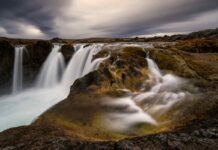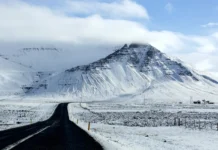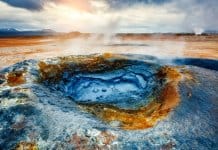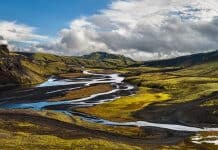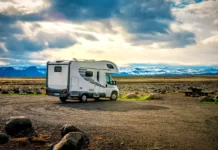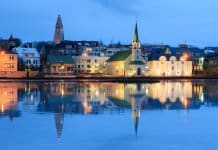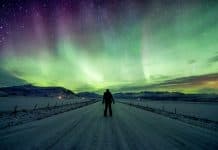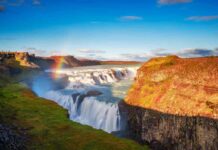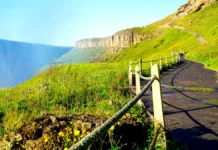November in Iceland brings quite a few changes in the weather. While most people consider the winter months to be December, January, and February, winter in Iceland really stretches more from October to April. During the extended season of cold weather, the island experiences temperatures and snowfall much like other parts of the world. It helps to know what to expect weatherwise from Iceland in November. This is an excellent time of year to visit. The massive crowds of summer have left, adventure activities like ice caves and glacier caves are available, the country’s spectacular Northern Lights are on full display. Let’s take a look at average temperatures as well as rain, snow and other weather-related elements during November in Iceland.

Average Temperatures in Iceland in November
I’ll just come right out and say it. Iceland is cold in November. As I mentioned earlier, the mercury reading on the thermometer has already reached what many consider winter levels. If you’re wondering how cold Iceland really is in November, get ready to bundle up. The average high is around 41 ºF (5 ºC), and the average low is around 38 ºF (3 ºC). While not exactly freezing, you’re starting to get pretty close! You should get your layer game in order. We wrote an article about using the four-layer rule for dressing in Iceland. Check it out here to make sure that you pack the right items to stay warm, dry, and happy during your trip.
Precipitation: Rain, Snow, Sleet, Hail?
If you’re wondering whether it snows in Iceland in November, the answer is yes. It’s usually closer towards the end of the month, however. What you want to be more prepared for is rain, which is why it’s essential to invest in a good rain jacket for your outer shell layer. Iceland is a rainy, stormy island, and you never know when you’ll get caught you in a downpour (or a snowstorm for that matter). The South Coast of Iceland is particularly wet, so keep this in mind when you are planning your trip itinerary. Bring a good pair of waterproof hiking boots if you plan on spending any time outdoors. And be careful in places like waterfalls or other natural areas. Things can get quite slippery, and you don’t want to fall.
If you are lucky enough to be there when the snow starts, you’ll be treated to a winter wonderland. Snow covers the mountains and landscapes and looks like the inside of a snow globe.

Daylight Hours
Another thing to note is how many hours of daylight Iceland gets in November. As we head towards the winter equinox, the number of hours of sunshine significantly reduces this month. The month starts with around eight hours of daylight, with sunrise just after 9 am and sunset just after 5 pm. With each passing day, you lose about six minutes per day of sunlight. By the end of the month, you’ll be down to about five hours a day, with the sun rising around 10:45 am and setting just before 3:45 pm.
- November 1st: Sunlight from 9:07 am to 5:07 pm (8 hours)
- November 15th: Sunlight from 9:56 am to 4:27 pm (6.5 hours)
- November 30th: Sunlight from 10:42 am to 3:49 pm (5 hours)
With longer nights, a lot of people also wonder if you can see the Northern Lights in Iceland in November. You absolutely can! The Aurora Borealis starts to make its first appearance in mid-to-late September. If you plan your trip for November, there’s a very good chance you will see them.

What is the Weather Like in November in Iceland?
If you’ve been trying to decide on the best time to visit our country but you were worried about the weather in November in Iceland, fear not. The fall and winter are wonderful times of year for your trip. Don’t let fear of the cold scare you away, as temperatures and climate are completely manageable, as long as you pack the right clothing. Have a great trip and let us know how it goes.


